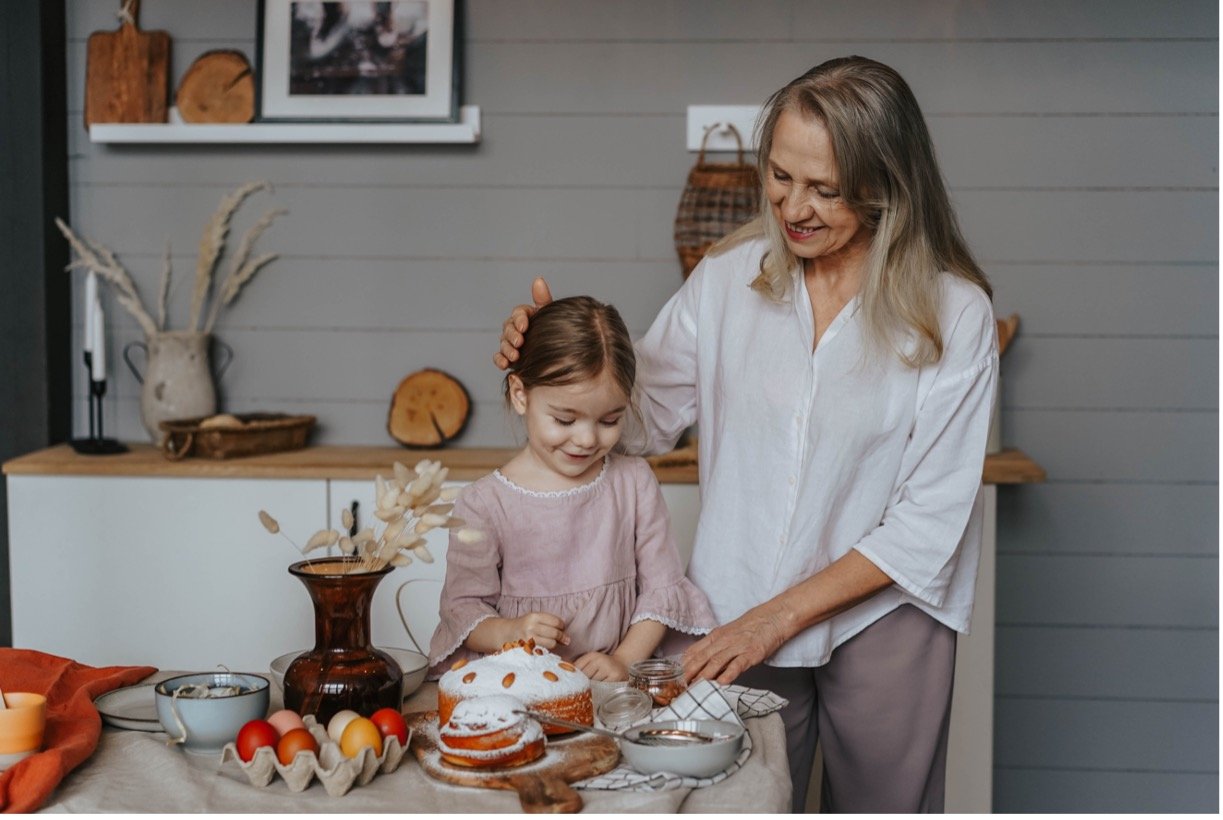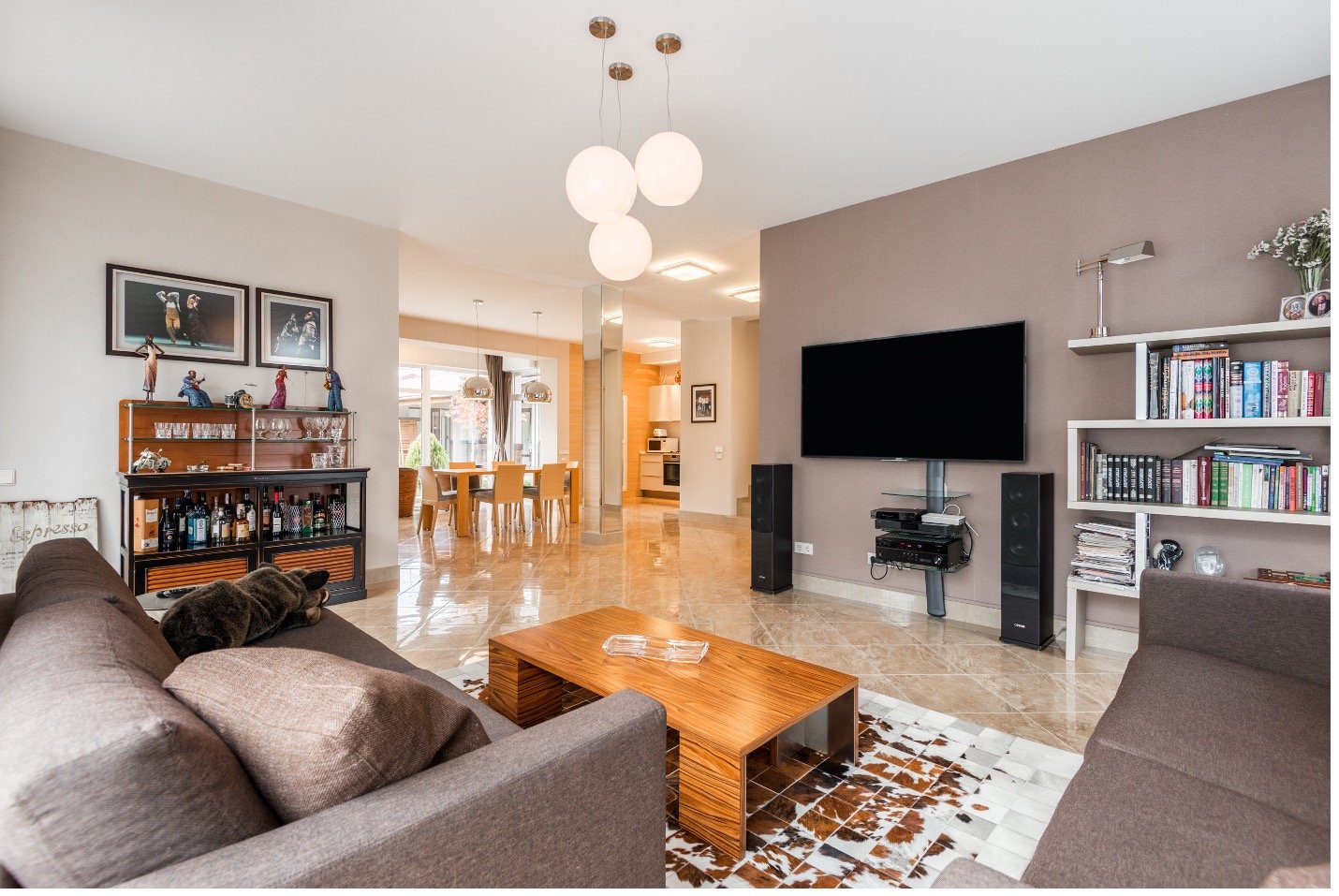
Morrison shares benefits and considerations…
Our insightful Inclusive Home Design Expert, Vaila Morrison RIBA, advises on key considerations for living as an extended family in one home.
As I write about this thought-provoking topic, I picture the beautiful Disney movie Coco where four generations of a family live together and see their special relationships strengthened as a result. There are of course stresses and strains, but importantly stability and security, as the love of the large family network shines through. If you haven’t seen it, it’s a lovely weekend watch with a little one.
What is multigenerational living?
Multigenerational living is where two or more generations of a family live together in the same household. For various reasons – including care, housing and childcare costs – this type of housing arrangement is becoming increasingly popular and worth considering.
If you are contemplating growing your household to accommodate an extra family member (or a few), there are practical and emotional factors to weigh up. The decision depends on the context, the personalities of the people involved and the suitability of the house.

Western cultures tend to adopt a more separate way of living, so coming together can seem a significant change. On the other hand, some families have only ever known living in a multigenerational home (as with Disney’s Coco). So, let’s explore the advantages and disadvantages.
Advantages
Enhanced bond between grandchild and child
Living in a multigenerational environment can be immensely enriching and help to nurture close bonds across the generations. Children can benefit greatly from being around people with different life experiences and perspectives.
There is gathering evidence of the benefits for older people, who are ‘kept young’ by the enthusiasm for life and learning in little ones. The Channel 4 TV series Old People’s Home for 4 Year Olds is a fabulous demonstration of the benefits to mental health and measurable improvements to physical health that arise from a group of older, retirement village residents spending time with a nursery class of children for six weeks.

Childcare support
Having an extra pair of hands, ears and eyes around can help to take the pressure off parents, with entertainment and supervision of younger children conveniently available and shared. If older family members are willing and able, they could support with day-to-day childcare or school runs.
Reducing isolation
Loneliness is sadly prevalent in society, particularly amongst older people. With COVID-19 and the last 18 months or so of long lockdowns having greatly exacerbated this worrying trend, living together as a family (rather than apart) can most help to tackle this issue.
You look out for one another
As we grow older, we almost inevitably need more support and potentially extra care. Simply the reassurance that someone is there for us can make a world of difference to our wellbeing. Alongside this and younger generations struggling with rising housing costs, there is a lot to be said for combining forces in a multigenerational household.

Disadvantages
Without planning, pressure can hit
Multigenerational living can often come about as a last resort during a time of crisis, such as an older relative requiring further care once it becomes too difficult or dangerous for them to live on their own. With little futureproofing or planning, the pressure can take its toll on a family.
A sudden change can be disorientating for everyone and stir negative emotions of loss and frustration. This could manifest as an older relative feeling as though they have lost their independence, or younger family members growing overwhelmed by the sense of responsibility that accompanies another person joining the home. But fear not – this is where effective, inclusive design can come in and make a remarkable difference.
Inclusive design
The first, and crucial, step to consider is the different needs of each family member living in the home. Then, how many rooms will need to be accommodated. Anticipate how each space will be used – namely, whether it will be private or shared and how frequently. For example, will you cook then eat together or at different times? Will you relax together, or do you prefer different areas for leisure activities like watching TV or playing music?
Sometimes the answer can be both… preparing a meal and socialising can be lovely, shared activities to help older family members maintain independence and teach various skills to the younger ones. However, sometimes everyone needs their own space! Open-plan living creates a larger area for gathering, then rooms upstairs can offer privacy so family members to enjoy their hobbies and company.

Another important consideration when planning is the various bedroom locations. Will there be different zones for different generations? Or will all the bedrooms be together? This can be determined by many factors including access requirements for now or the future, particularly if bedrooms are located upstairs. If certain family members find themselves with mobility issues then a downstairs bedroom may be more appropriate; if this isn’t possible, planning to accommodate a stairlift or home lift can be the solution.
Acoustics are also likely to be important too with larger households. Sound separation between rooms will allow family members to enjoy louder activities (like watching a film) so others can indulge in a quiet moment (say, to read). Within rooms, particularly larger open-plan spaces, it’s worth thinking about surface finishes and furnishings to minimise echo in acoustically overwhelming spaces. This can be problematic for individuals with hearing impairments, particularly those with hearing aids.
Your garden can be updated for all the family, so everyone can safely relax or potter around outside among nature. For further information on this, our gardening expert Mark Lane has shared his brilliant tips to design an accessible garden.

Legal and financial FYIs
Money is a sensitive subject. However, to avoid possible disputes around ownership and inheritance down the line, financial obligations ought to be clarified early on if you’re contemplating joining households. For instance, if one family member invests in a house owned by another, they must clarify whether it is a gift, a loan, or deemed an investment on which a return will be expected.
Planning permission might be needed if physical changes are being made to the house. Firstly, for any external alterations. Secondly, because the local planning authority may be concerned if they believe there is a risk of any accommodation built for an elderly relative potentially being rented out or sold on as a separate property to the main house in the future.
There are also planning regulations around ‘Houses in Multiple Occupation’ (HMO) which should be checked, as these differ between local authorities. However, if residents are related to one another this is less likely to apply.
Preparation is key!
I am a true advocate of planning ahead. In the wise words of Caroline Dove (architect and author of Radical Housing): “Planning to be together is better than being forced together!”
Moreover, a change as significant as combining households is far more likely to be successful when expectations are managed and time is allocated for mental and physical adjustments too. Think practically, be kind to yourself, keep your loved ones’ interests and heart and keep on being you.
Vaila has provided further expertise on inclusive living and design which are worth a read.
Stay up to date
Latest Blogs

Whole Home Comfort with Stannah and HSL

Dame Zandra Rhodes x Stannah: When accessibility meets style
Could more people benefit from home adaptation support for hidden disabilities?
50 years of Stannah Stairlifts – A milestone grounded in purpose

BBC’s Dr Punam Krishan reveals a little-known Parkinson’s symptom to watch for...

Are you at risk of falling? Dr. Punam Krishan’s simple 12-second test could tell you...

Snore Wars: Could sleeping separately be the secret to a better night’s rest?

Proud to carry the Made in Britain mark!
Stairlifts made for you
All our stairlifts whether straight or curved are customised to suit you and your home so call now to arrange a visit to get your FREE personalised quote!